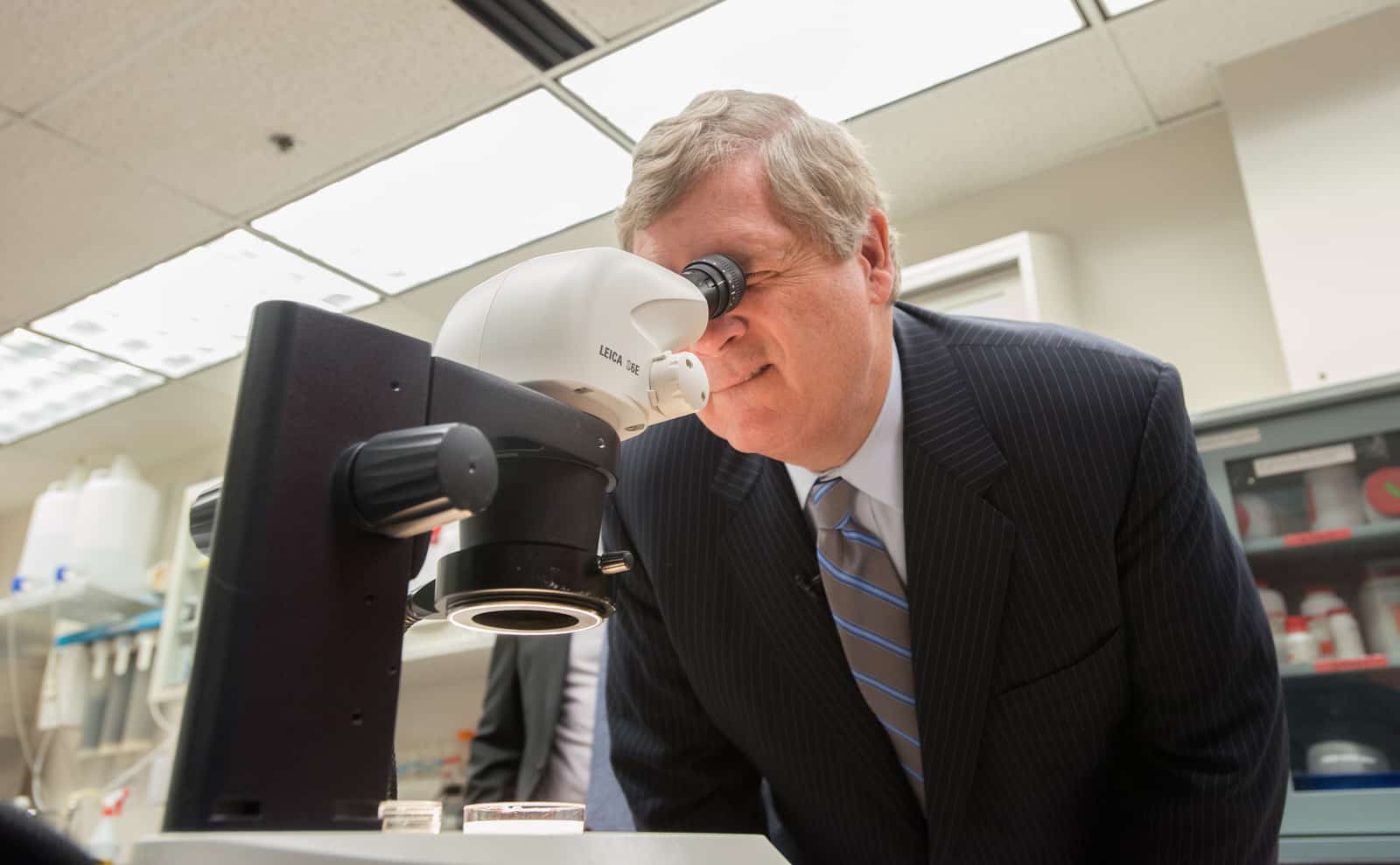How can we support both fundamental scientific research and innovative technology applications in Canada? The federal government is launching a Fundamental Science Review to examine Canada’s research ecosystem in comparison to other countries and determine how the government should fund and support fundamental and applied scientific research. This has sparked a national discussion of scientific priorities.
University of Toronto Professor John Polanyi, a Nobel laureate in the Department of Chemistry, joined this debate with an article in The Globe and Mail, arguing that Canada should separate its mechanisms for funding fundamental science and its applications, which the government presents euphemistically as “innovation.” In his opinion, the current system denies the fundamental scientist “the freedom to make discoveries,” while preventing the innovator from “focus[ing] on the market place.”
Polanyi is correct: the federal government’s Natural Sciences and Engineering Research Council has been pouring money into research performed with industrial partners. It has focused on immediate applications, more than doubling its expenditures on ‘Innovation and Research Partnerships’ from 2012 to 2016, while its expenditures on fundamental research have remained flat over the same time period.
Professor Jun Nogami, chair of the University of Toronto’s Department of Materials Science and Engineering, agrees with Polanyi’s criticism of this system, describing the tension between industrial partners and fundamental researchers: “Industry is really only interested in things that are going to be on the street within two or three years,” while for fundamental research, “that timeline might be more like 10 to 20 years.”
This conflict is not new. When the British physicist Michael Faraday was questioned by a government official about the utility of his electricity research, he famously dismissed the question by retorting, “One day, Sir, you may tax it!” Faraday could not predict the impact both his research and electricity would eventually have, other than a vague promise of future revenue for the government treasury, but an industrial partner would have required almost immediate returns. Luckily, Faraday’s research was not impeded by such requirements, and society relies on his results to a tremendous degree.
It may appear that the solution to this problem is trivial — fund science and innovation separately and all will be well. This approach, however, would ignore both scientific and political requirements, which require a unified approach to supporting science and innovation.
Fundamental science and its applications in technology drive each other forward. As an example, when Polanyi won his Nobel Prize in Chemistry, he met the physics laureates whose fundamental research led directly to the invention of scanning tunnelling microscopes, which are able to detect objects as small as individual atoms. Polanyi soon acquired several of these microscopes, which allowed him to directly observe reactions of particles. This technological development has enabled much of his research, showing that fundamental science both creates and relies on technological innovation.
Pierre Savard, a Professor in U of T’s Department of Physics and a veteran of the European Organization for Nuclear Research (CERN) describes this relationship as a “feedback loop.” His work on particle accelerators has led to technology like televisions’ cathode ray tubes and, in turn, new pathways of exploration within particle physics have been opened by technological developments that enable greater precision in measurements. The experience of both professors shows that in laboratories, it is impossible to isolate the fundamental science and its applications, and thus, the government cannot separate the two in its funding process.
In the political arena, purely fundamental research is often seen as unnecessary and a waste of public funds. Nogami describes funding for projects devoted solely to fundamental science as being viewed as a political “luxury” we can rarely afford in Canada. Few governments seem prepared to spend the political capital required to defend research into seemingly-esoteric disciplines, such as high-energy particle physics or string theory. For this research to be politically feasible, Professor Savard argues: “It makes sense to really encourage the people you fund to… think about ways [their] research could be useful.”
Scientists demanded the ability to share their research data, which led directly to the invention of the World Wide Web. String theory researchers developed mathematical insights that have applications in the science of data transmission, which is the foundation of modern communication systems. Even in these rather abstract fields of study, researchers can gain understanding transferable to everyday problems. Government support of science must encourage these connections between fundamental research and technological applications to accommodate the political reality.
The reasons behind this political indefensibility of fundamental science research in Canada remain unclear. Amongst scientists, Savard believes that there exists a shared approach of “questioning things, rational thinking, and just curiosity.” Penney Gilbert of U of T’s Institute of Biomaterials and Biomedical Engineering agrees, arguing that “as basic researchers, what we’re driven by and what wakes us up in the morning is asking questions, having hypotheses, and answering them.” The first director of the American Fermilab shared this view, explaining to Congress that while fundamental science rarely contributes to defense of a country, its intrinsic value “makes our country worth defending.”
However, Savard points out that public attitudes towards fundamental science vary greatly from country to country: “Some nations that are more left-leaning, they will tend to just view the pursuit of knowledge for its own sake as something you don’t even question… It’s much harder to get the same feeling in the US, for instance.”
Politics and science alike dictate an integrated approach to supporting science and innovation. Whether researchers should be encouraged to consider potential applications without tying them to the accelerated timelines of industry is the most interesting question facing the government’s review. Opposite to this idea is why the Canadian public is reluctant to accept scientists’ belief in the intrinsic value of scientific research.


